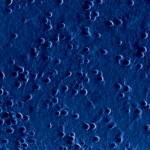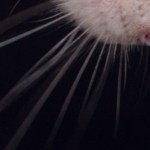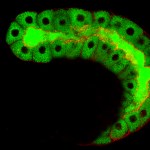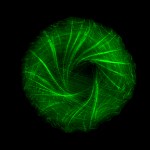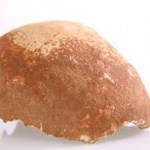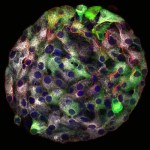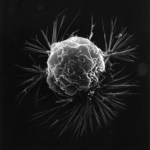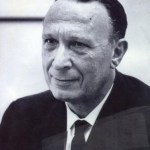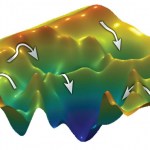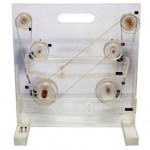Biophysics
Does the brain really operate like some kind of extra-complex computer, with logic gates and circuits made of the synapses that connect one neuron to another?
In 2009, we wrote:
In the future, the interface between brain and artificial system might be based on nerve cells grown for that purpose. In research that was recently featured on the cover of Nature Physics, Prof. Elisha Moses of the Physics of Complex Systems Department and his former research students Drs. Ofer Feinerman and Assaf Rotem have taken the first step in this direction by creating circuits and logic gates made of live…
The whisking of a rat’s whisker is a classic example of “active sensing” – in other words, sensing that involves movement. Prof. Ehud Ahissar studies rat whisking in order to understand how mammals perceive through all types of active sensing; without the continuous movement of whiskers, fingertips or eyes, our perception of our surroundings would be lacking. (If you don’t believe us, try feeling the texture of your shirt or desktop without moving your fingers. You can’t stop your eyes – as you read this, your eyes are actually moving back and forth in tiny movements.)
In the latest research…
Cells that “spit” out their contents and messenger RNA that is not so swift at delivering its message. Those are two brand new stories on our new and improved website. Check it out and let us know what you think.
The first story arose from a simple question: How do secretory cells – those that produce copious amounts of such substances as tears, saliva or all those bodily fluids – manage to get their contents out of the cell? Cells are walled all the way around; they don’t really have doors for letting things the size of a drop of fluid out. Instead, they use the vesicle system – small globes…
Here is today's scientific image:
This delicate, fluffy object is a cytoskeleton viewed under a fluorescence confocal microscope. Below is a time-lape video of the process. For an explanation of why the cell's actin fibers twist around into this shape, go to our website.
[embed]https://www.youtube.com/watch?v=iLm0Ojngjc4[/embed]
Indeed, all three of today's new articles involve crucial cellular dynamics: cutting up unfolded proteins with pared-down molecular "scissors" and binding to metal ions in proteins. In other words, within that lovely shell-like cytoskeleton, the cell is quite a busy…
Manot Cave cranium
With a skull and Keats, there was little choice but to write about the new online items in rhyme. So with apologies to Shakespeare, Keats and the scientists, as well as the people at SpaceIL, here are today's grab bag of poems. As usual, follow the links.
On a Lone Cranium
Alas poor Yorick – We can only know
Where you lived all those eons ago
Walking, did you take those others in stride;
Human, yet strange, as they strode alongside?
Did your children wander forth,
Searching for a greener North?
Can your skull, a bit of bone,
Tell us where our seeds…
What's in a picture?
Prof. Benny Shilo knows the value of a good picture. We recently mentioned his book: Life’s Blueprint, which uses photographs of things like bread dough and yeast cells to illustrate the process of biological development. Here is the image from the most recent piece we have uploaded on his research:
This is an individual Islet of Langerhans, as you’ve never seen it before. The white dots are the insulin-containing vesicles inside the beta cells, which both sense glucose levels and secrete insulin. Shilo and his team managed to get “close-up shots” of the individual cell…
Is the general audience "black board" talk at KITP today, giving an overview of the quantitative approches to morphogenesis program currently unverway.
Symmetry breaking and mechanics.
The Kavli Institute for Theoretical Physics runs parallel programs and currently there is a biophysics program New Quantitative Approaches to Morphogenesis concurrent with the astrophysics program on A Universe of Black Holes
During each multi-week program there is a black board lunch talk, for all members of KITP, giving an overview of the theme of the program or some key aspect of it. The talk is intended to…
New research at the Institute may offer a sliver of hope for treating “triple-negative” breast cancer. “Triple-negative” refers to the fact that the breast cancer cells are missing the three different receptors targeted by the currently available drugs, for instance Herceptin and steroid hormone blockers. This type of cancer also tends to be fairly aggressive, and the risk of early recurrence is higher than for other types of breast cancer.
Triple-negative breast cancer cells do have other receptors – particularly EGFR, a growth factor receptor that would seem to be a good target for…
“The public, blog-fueled controversy over the utilization of arsenate instead of phosphate in bacteria was, in the end, a demonstration of what is truly right with scientific quests,” says Prof. Dan Tawfik. “The original findings (that certain bacteria can use arsenate instead of phosphate) may have been overhyped. The research itself may have been underwhelming. But what ensued is exactly what should have happened: The correcting mechanisms that are intrinsic to science kicked in. Other experimental groups examined the claims in their labs and found them to be unsupported. And new scientific…
We recently witnessed the disagreement over the official memorial for the 11 Israeli athletes killed at the Munich Olympics 40 years ago. Fewer remember the terrorist attack in the Lod airport a few months earlier – in May – in which 24 people lost their lives. One of those was the head of the Weizmann Institute’s Polymer’s Department, Prof. Aharon Katzir. (Somewhat ironically, in light of the later attack, Katzir had just returned from Germany, where he had co-organized a conference with Nobel laureate Manfred Eigen.)
Aharon Katzir
Aharon Katzir and his brother, Ephraim, who would later…
Proteins are strung together from amino acids attached in long chains, one after the other. But for most proteins, this is just the beginning - next they must fold. "Folding" is the general term for the way that a protein strand twists, coils, winds, pleats and creases into an intricate three-dimensional structure. Only then can it go to work.
The sequence of amino acids is what determines the final shape of the protein: Molecules assembled on the same plan will end up in the exact same configuration. The funny thing is, they don't all go through the same set of steps to arrive at their…
Yanling Yang, who just graduated with a Ph.D. from my lab, has a paper in the just published November issue of Biophysical Chemistry. The entire issue of the journal celebrates the 25th Anniversary of a conference called "The Gibbs Conference on Biothermodynamics", and each of the papers is from the laboratory of one of the organizers of one of the previous 25 annual meetings (I co-organized #24). Despite the restricted invitation list, however, all the papers were peer reviewed (some quite viciously according to reports) and some required several months of revisions to qualify for the…
Okay, after a long, long gap (on the blogosphere timescale) and/or almost zero elapsed time (by scientific literature standards), we're going to attempt to wrap up this mini-series on heat capacity effects in biology. Parts 1 and 2 are here and here, respectively.
So: How do you know if your reaction has a heat capacity change? Actually, it's easy: collect data as a function of temperature and make a van't Hoff plot (ln 1/Keq versus ln 1/temperture) or a Gibbs-Helmholtz plot (ÎG versus temperature) - if either plot is not-linear your reaction has a ÎCp.
This figure shows Gibbs-Helmholtz…
We don't mean to kvetch, but the new website we promised back in June is still as elusive as cold fusion. Scientific research, of course, is going strong, and we even continue to write about it, but no one can read about it on our website (and therefore, we can't offer links to articles on the newest findings).
In the meantime, here is the October image from our 2010-2011 calendar:
It looks like quite a simple apparatus, but in many ways, it was far ahead of its time. It was called a mechanochemical engine, and it was created at the Institute in the 1950s by Prof. Aharon Katzir. Katzir…
Our lab has a new paper coming out this week in the Journal of Molecular Biology (JMB):
The Glutamate Effect on DNA Binding by Pol I DNA Polymerases: Osmotic Stress and the Effective Reversal of Salt Linkage
I'm going to talk about a few highlights here, but if you actually want the full article, say so in the comments or email me directly and I'll send you a reprint, because unless you or your university has a subscription to the Journal of Molecular Biology, you'll only be able to see the abstract.
The paper comes primarily from the Ph.D. dissertation of Daniel Deredge and osmotic stress…
What's the application? Optical tweezers use focused light beams to trap small particles in the focus of the beam, and drag them around by moving the beam.
What problem(s) is it the solution to? 1) "How do we move these tiny little things around without touching them?" 2) "How do we measure the forces exerted by biological molecules?" 3) "How do we tie knots in DNA strands?"
How does it work?The basic optical tweezer scheme uses a single beam of light focused down to a very small spot. If you take some small (mostly) transparent object and place it in the beam, it will feel a force pulling it…
tags: evolutionary biology, behavioral ecology, biochemistry, biophysics, magnetoreception, photoreceptor, cryptochromes, geomagnetic fields, butterflies, Monarch Butterfly, Danaus plexippus, birds, migration, signal transduction, researchblogging.org,peer-reviewed research, peer-reviewed paper
Every autumn, millions of monarch butterflies, Danaus plexippus, each weighing less than one gram (one US penny weighs 2.5 grams), migrate nearly 4000 kilometers (3000 miles) between their summer breeding grounds in the United States and their wintering areas either in southern California or in the…
On July 25, 1920 the English biophysicist Rosalind Franklin was born. She was instrumental in discovering the molecular structure of DNA, though her vital contributions were only posthumously acknowledged. After receiving her PhD from Cambridge in 1945 she worked as a research associate for John Randall at King's College in London. Beginning in early 1951 she took X-ray diffraction photographs of DNA that showed a helical form of the molecule, a finding confirmed by James Watson and Francis Crick who subsequently won the Nobel Prize for their DNA research. In lecture notes dated November…
